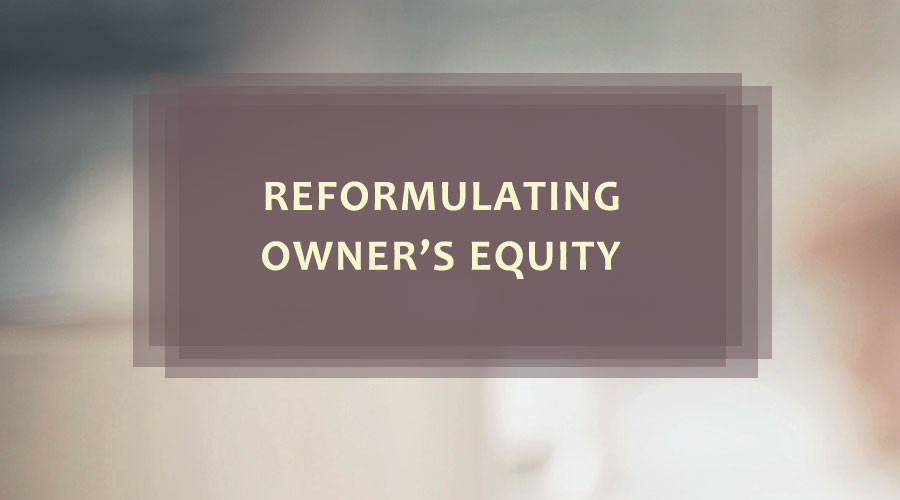
Owner’s equity is the total assets minus the total liabilities since the business began. It is considered as a source of business assets and it is not actually the current fair market value of the business.
And the word reformulating means that make some things in a different way by following the origin. So the result of income statement and balance sheet after reformulation become the same. There are three steps in the reformulation procedures of owner’s equity.
- Restate beginning and ending balances.
- Calculate net transactions with share holders.
- Calculate comprehensive income.
1. Restate beginning and ending balances:
- Preffered stock:
Preffered stock is a liability for the common share holders. If preffered stock is included in the beginning and ending balance that must be deducted from the balances. There is an exception for redeemable preffered stock, so that should not be excluded from the balances.
- Share Premium:
Share Premium is shown under different headings named “Share Premium” or “Additional Paid in Capital”. If the amount of premium is included that should be deducted from beginning and ending balances.
- Dividends Payable:
Under GAAP Statement dividend payable is reported as a liability. Since dividend is payable to the shareholders not to the debtors it is not a liability. So, Dividend payable should be added to the balances.
- Unearned Compensation:
Unearned Compensation is a process of transferring value from shareholders to employee when share are issued to the employee it price is less than the current market price. The difference between current market price and issue price is reported to as unearned compensation. This amount should be amortized over a period of time. Unearned compensation should be added to the beginning and ending balances.
2. Calculate net transactions with share holders:
At first we have to determine the amount of share issues then deduct the amount of share repurchase and common stock dividend. In this situation dividend must be the cash dividend not the dividend payable –
Cash dividends = Dividends reported + Beginning Balance – Ending Balance (Payable)
Transaction with shareholders
Share Issues XXX
Share Repurchase (XXX)
Common Stock Dividend (XXX)
3. Calculate comprehensive income:
Comprehensive income combines net income and other income reported in the equity statement. The income reported outside net income is other comprehensive income. All items of others comprehensive income is after tax. Currency translation gain or loss, unrealized gain and gain or loss from other sources will be adjusted to determine the comprehensive income.
There are a positive relationship among the beginning balance, transactions with shareholders and comprehensive income. The Statement shows the ending value of shareholders equity. Positive value of transaction with shareholders and comprehensive income shows that the ending value of shareholders equity is higher than the beginning value.
